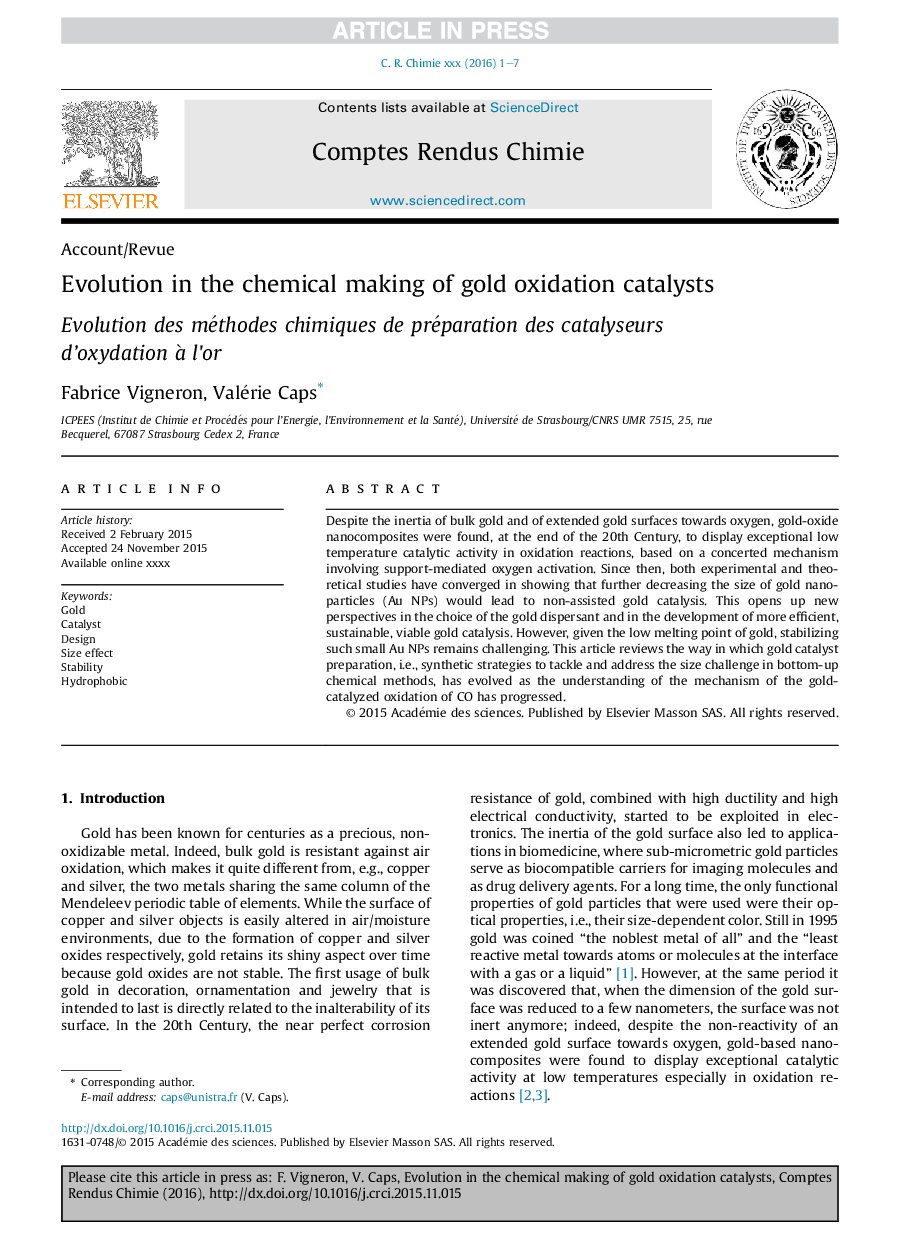| Article ID | Journal | Published Year | Pages | File Type |
|---|---|---|---|---|
| 6594573 | Comptes Rendus Chimie | 2016 | 7 Pages |
Abstract
Despite the inertia of bulk gold and of extended gold surfaces towards oxygen, gold-oxide nanocomposites were found, at the end of the 20th Century, to display exceptional low temperature catalytic activity in oxidation reactions, based on a concerted mechanism involving support-mediated oxygen activation. Since then, both experimental and theoretical studies have converged in showing that further decreasing the size of gold nanoparticles (Au NPs) would lead to non-assisted gold catalysis. This opens up new perspectives in the choice of the gold dispersant and in the development of more efficient, sustainable, viable gold catalysis. However, given the low melting point of gold, stabilizing such small Au NPs remains challenging. This article reviews the way in which gold catalyst preparation, i.e., synthetic strategies to tackle and address the size challenge in bottom-up chemical methods, has evolved as the understanding of the mechanism of the gold-catalyzed oxidation of CO has progressed.
Related Topics
Physical Sciences and Engineering
Chemical Engineering
Chemical Engineering (General)
Authors
Fabrice Vigneron, Valérie Caps,
